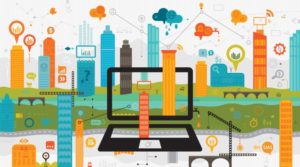“Safran is already helping to build smart infrastructure, with projects like its Changi airport screening project in Singapore demonstrating how sophisticated technologies like biometric identification can be used to automate and enhance a major piece of civilian infrastructure.”
The Internet of Things is emerging alongside the smart city, and Safran Identity & Security sees major opportunities in both.
 With a new infographic, the company predicts that by 2030, 60 percent of the world’s population will live in urban areas, with over 40 “megacities” with a population of at least 12 million arising around the world by 2025. That kind of growth is going to see major infrastructure challenges, such as figuring out how to deal with a 70 percent increase in urban waste by 2025. Fortunately, the IoT is bringing solutions: Industrial sensors can be used to more effectively monitor and manage waste, while self-driving smart cars could reduce accidents and help traffic run more smoothly. Energy efficiency could dramatically improve with machine learning management systems, and the same applies to water management.
With a new infographic, the company predicts that by 2030, 60 percent of the world’s population will live in urban areas, with over 40 “megacities” with a population of at least 12 million arising around the world by 2025. That kind of growth is going to see major infrastructure challenges, such as figuring out how to deal with a 70 percent increase in urban waste by 2025. Fortunately, the IoT is bringing solutions: Industrial sensors can be used to more effectively monitor and manage waste, while self-driving smart cars could reduce accidents and help traffic run more smoothly. Energy efficiency could dramatically improve with machine learning management systems, and the same applies to water management.
Safran is already helping to build smart infrastructure, with projects like its Changi airport screening project in Singapore demonstrating how sophisticated technologies like biometric identification can be used to automate and enhance a major piece of civilian infrastructure.
Meanwhile, other major companies are exploring smart city opportunities, too. Mastercard, for example, has been moving to get its digital and contactless payment technology into city infrastructure; and NEC has developed solutions like a crowd analytics system, and recently secured a position on a working group dedicated to establishing smart city IT standards for Europe. On the networking front, Ericsson and MNOs like China Mobile have been eagerly developing more sophisticated connectivity solutions upon which IoT and smart city devices can communicate.
It’s a heady time, in other words, with new technologies arriving just in time to help run the smart cities of the future.

Follow Us